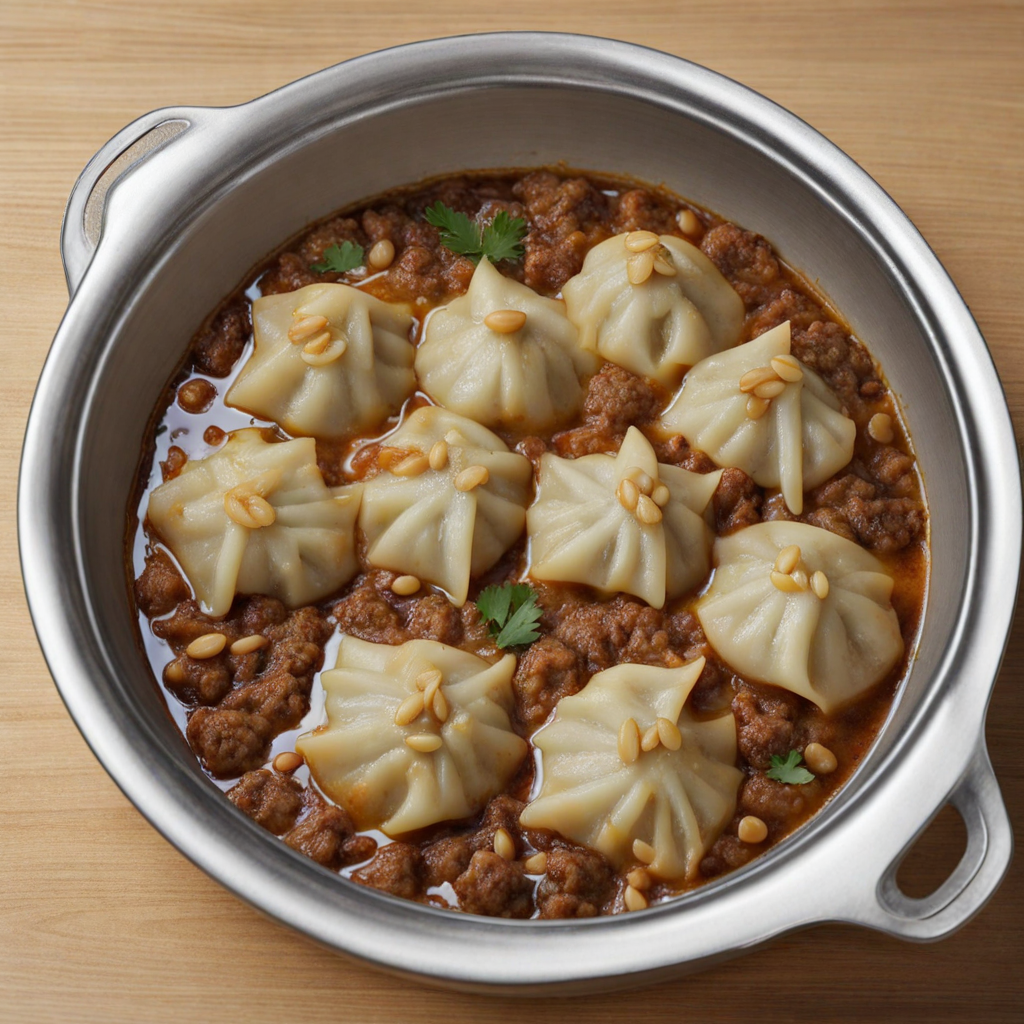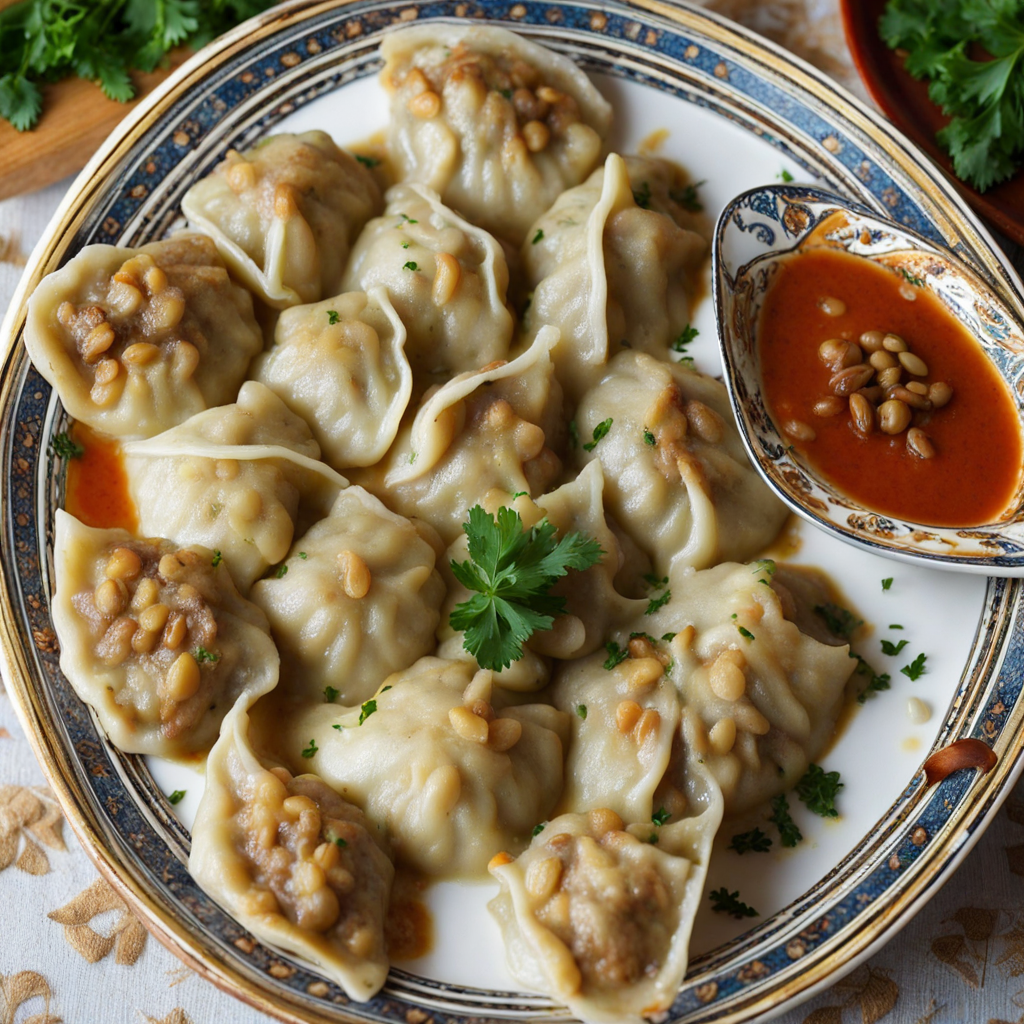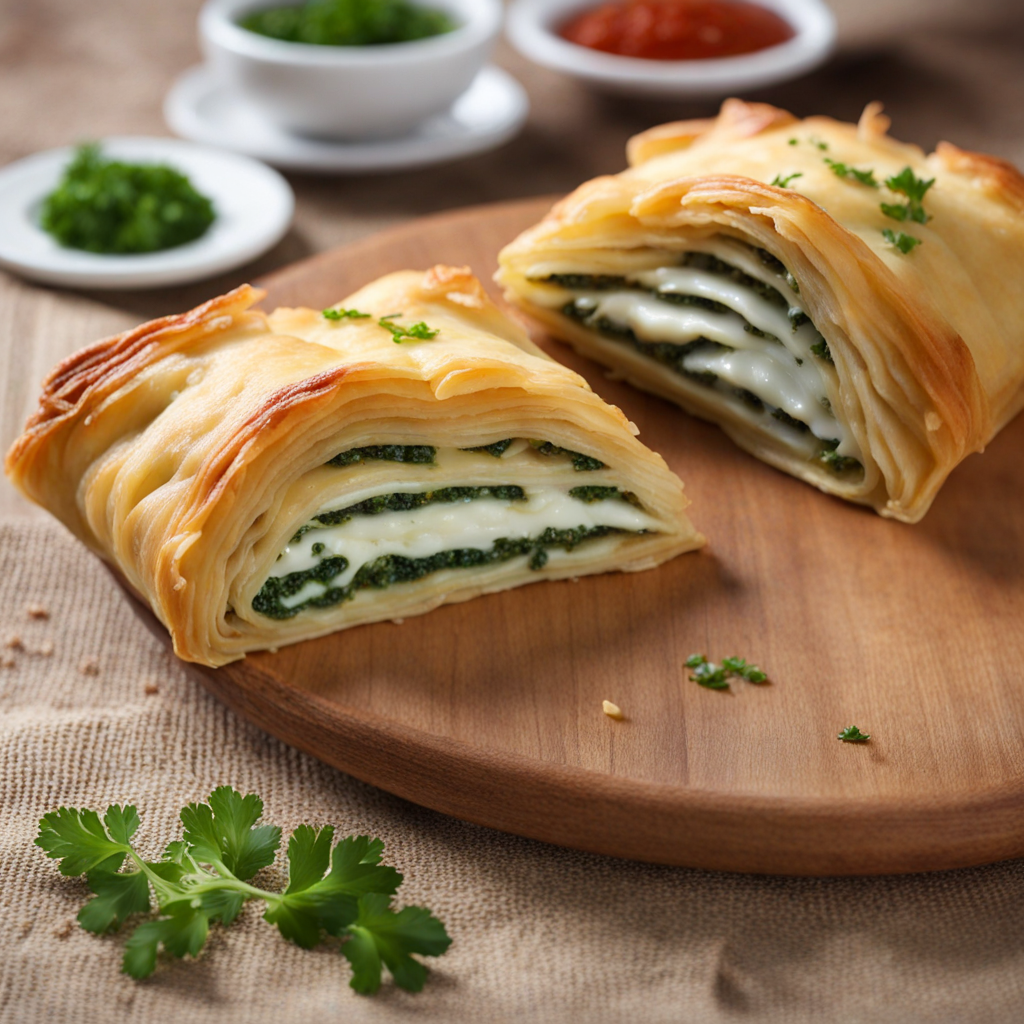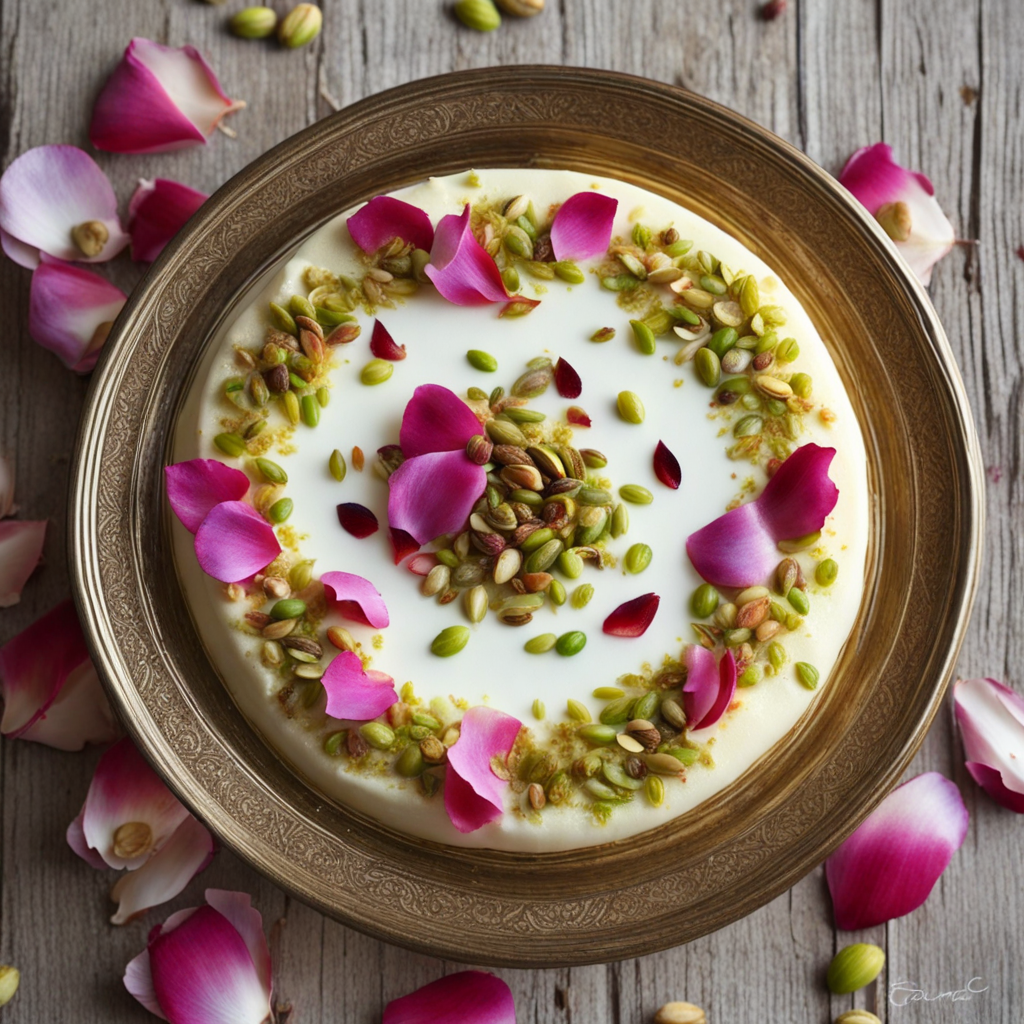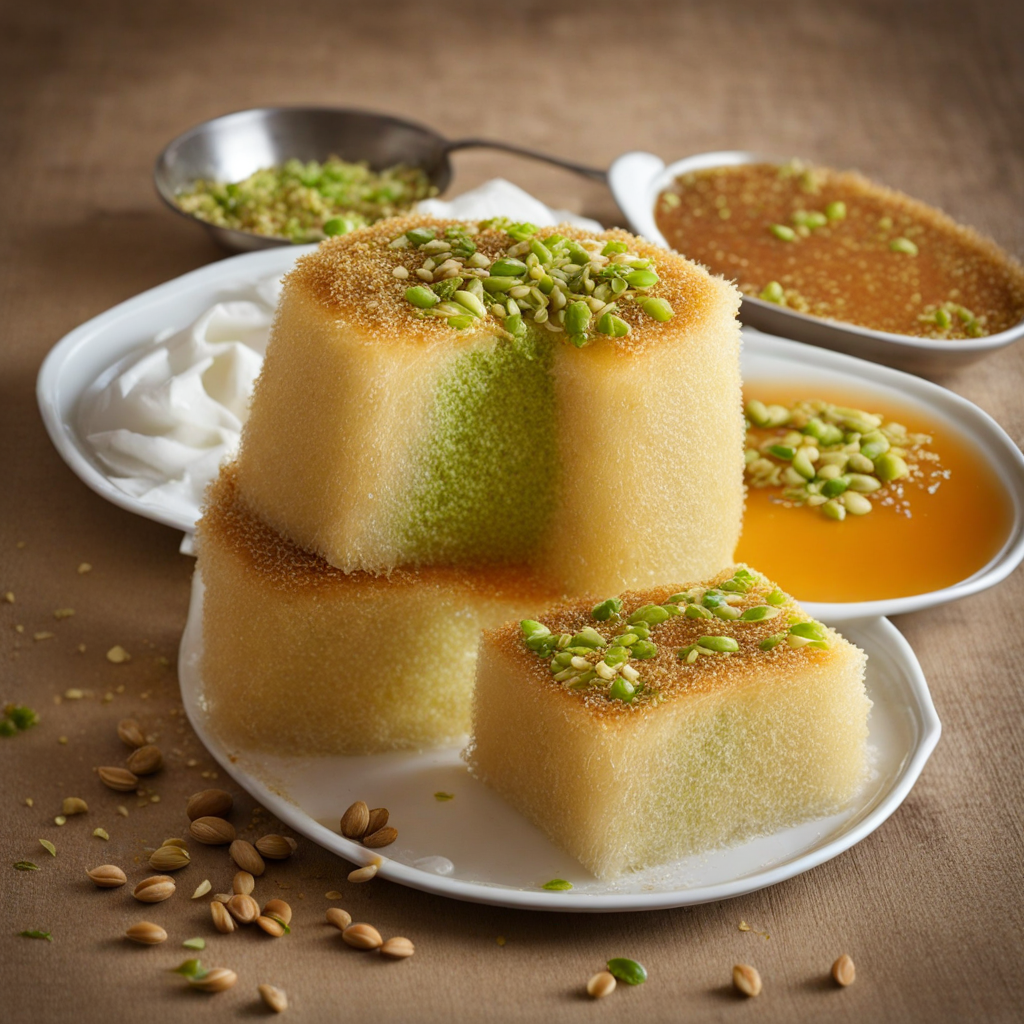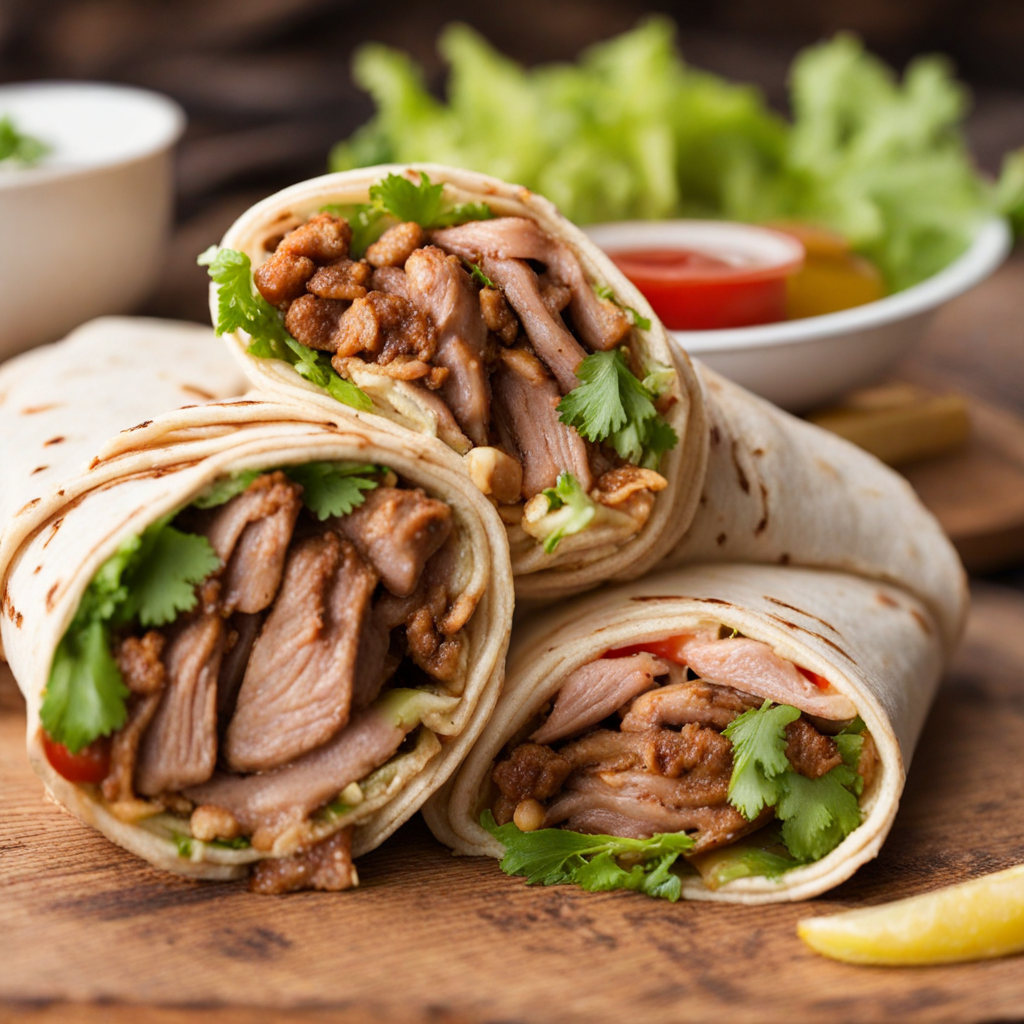Shish Barak
Shish Barak is a delightful culinary treasure from Syria that showcases the rich flavors and traditions of Middle Eastern cuisine. This dish primarily consists of tender dumplings filled with a savory mixture of ground meat, typically lamb or beef, combined with aromatic spices, pine nuts, and sometimes herbs. The dumplings are carefully crafted from a thin layer of dough, resembling a ravioli, which is then sealed to encase the flavorful filling. The combination of spices, such as cinnamon and allspice, gives the meat a warm, earthy flavor that perfectly complements the richness of the dish. Once assembled, the Shish Barak dumplings are gently simmered in a luscious yogurt sauce that is both tangy and creamy. This sauce is often enriched with garlic and mint, creating a harmonious balance of flavors that elevates the dish to new heights. The yogurt acts as a perfect base, enveloping the dumplings and infusing them with its distinctive taste while also providing a delightful contrast to the savory filling. The dish is typically served warm, making it a comforting choice for any meal. Shish Barak is not just a dish; it is an experience that invites you to savor every bite. Often garnished with a sprinkle of fresh herbs and served alongside rice or bread, it embodies the essence of communal dining, where sharing and enjoying food together is central to the experience. Whether enjoyed at a family gathering or a festive occasion, Shish Barak offers a taste of Syria that is both unique and unforgettable, inviting you to explore the depths of its rich culinary heritage.
How It Became This Dish
The History of شيش برك (Shish Barak): A Culinary Journey from Syria Origins: A Taste of Tradition Shish Barak, a beloved dish in Syrian cuisine, is a delightful combination of dumplings filled with spiced meat, often served in a tangy yogurt sauce. The dish’s name is derived from the Arabic words "شيش" (shish), meaning skewer, and "برك" (barak), which refers to the dumplings. Its origins can be traced back to the Levant region, where rich culinary traditions have flourished for centuries, influenced by various cultures and peoples. The earliest records of dumpling-like dishes can be found in ancient Middle Eastern texts, suggesting that the concept of encasing meat and spices in dough has been a part of the region's culinary heritage for millennia. While the precise origin of Shish Barak remains elusive, it is commonly believed to have roots in the nomadic traditions of the Middle East, where preserving meat in a portable form was essential for wandering tribes. Cultural Significance: A Symbol of Hospitality In Syrian culture, food is more than sustenance; it is a means of expressing hospitality and love. Shish Barak holds a special place in this tradition, often served during festive occasions and family gatherings. The act of preparing Shish Barak can be a communal affair, with family members coming together to make the dough, fill the dumplings, and craft the accompanying yogurt sauce. This shared experience not only strengthens family bonds but also preserves culinary heritage through generations. The dish is particularly popular during Ramadan, the holy month of fasting, as it serves as a nourishing meal to break the fast. Its rich flavors and satisfying texture make it an ideal choice for gatherings, reflecting the importance of community in Syrian culture. Furthermore, Shish Barak is often associated with celebrations such as weddings and holidays, where it symbolizes abundance and joy. Development Over Time: A Culinary Evolution As with many traditional dishes, Shish Barak has evolved over the centuries, adapting to local ingredients, tastes, and cooking methods. In Syria, the dish has regional variations; for instance, in the northern regions, Shish Barak may be enriched with herbs like mint and parsley, while in urban centers like Damascus and Aleppo, the dish might feature a more complex blend of spices. The basic components of Shish Barak have remained consistent: a thin dough encasing a filling made primarily of minced meat, commonly lamb or beef, mixed with spices such as cinnamon, allspice, and pine nuts. The dumplings are typically boiled or steamed, then served in a yogurt sauce that is often flavored with garlic and lemon. This tangy sauce contrasts beautifully with the savory filling, creating a harmonious balance of flavors. The yogurt sauce is another area where regional variations emerge. In some households, the yogurt is thickened with cornstarch for a creamier texture, whereas others may prefer a lighter sauce that allows the flavors of the dumplings to shine through. This adaptability speaks to the enduring nature of Shish Barak, allowing it to be both a comfort food and a dish worthy of special occasions. Modern Interpretations: A Global Phenomenon In recent years, Shish Barak has gained recognition beyond its Syrian roots, becoming a staple in Middle Eastern restaurants around the world. As the diaspora of Syrian communities has spread, so has the love for this traditional dish. Chefs and home cooks alike have begun to experiment with Shish Barak, incorporating new ingredients and techniques while honoring its traditional essence. Contemporary interpretations of Shish Barak can be found in various forms, from bite-sized appetizers to gourmet entrees served in high-end restaurants. Some modern chefs have taken creative liberties, introducing fusion elements by pairing Shish Barak with international flavors or presenting it in innovative ways. This evolution highlights the versatility of the dish, allowing it to appeal to a broader audience while still retaining its cultural roots. The Future: Preservation and Celebration As the world becomes increasingly interconnected, the risk of traditional dishes fading into obscurity grows. However, efforts to preserve and promote culinary heritage are on the rise. In Syria and among the diaspora, there is a renewed interest in traditional cooking methods, with many young people learning to make Shish Barak from their parents and grandparents. Cookbooks, cooking classes, and online tutorials are helping to keep these traditions alive, ensuring that future generations will appreciate this iconic dish. Moreover, Shish Barak has found its place in cultural celebrations, food festivals, and culinary competitions, further cementing its status as a symbol of Syrian identity. Events that showcase traditional foods allow communities to come together, share stories, and celebrate their heritage through the lens of cuisine. Conclusion: A Culinary Legacy Shish Barak is more than just a dish; it is a testament to Syria's rich culinary history, encompassing the flavors, traditions, and stories of its people. From its ancient origins to its modern adaptations, Shish Barak embodies the resilience of cultural identity in the face of change. As it continues to evolve and find new audiences, this delectable dumpling remains a cherished symbol of hospitality, community, and the joy of sharing food with loved ones. In a world where culinary traditions are constantly shifting, the story of Shish Barak serves as a reminder of the importance of preserving and celebrating our food heritage. As families gather around the table to enjoy this exquisite dish, they partake in a timeless ritual that honors the past while embracing the future, ensuring that Shish Barak will continue to delight generations to come.
You may like
Discover local flavors from Syria


